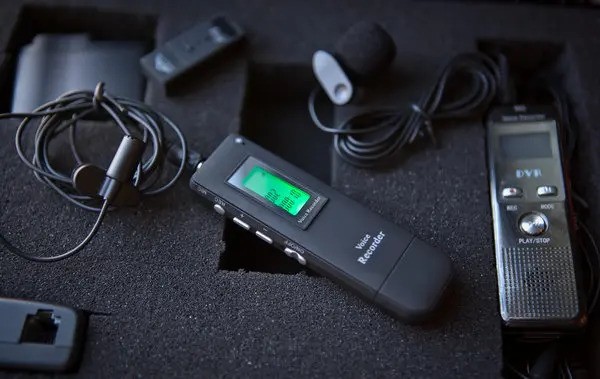In today’s digital age, privacy is becoming more and more elusive. Whether you are at home, in your office, or even in a hotel room, the possibility of being monitored without your consent has become a serious concern. One of the most alarming threats to privacy is the use of hidden listening devices. These covert tools are often used for surveillance, espionage, or even blackmail. Understanding what hidden listening devices are, how they work, and how you can protect yourself is more important than ever.
What Are Hidden Listening Devices?
Hidden listening devices, also known as covert audio bugs or wiretaps, are small gadgets designed to capture conversations without the knowledge or consent of the people being recorded. They can come in a variety of shapes and sizes — from miniature microphones and disguised recorders to advanced transmitters embedded in everyday objects like clocks, lamps, smoke detectors, and even power outlets.
The technology behind these devices has evolved significantly over the years. Modern hidden listening devices are not only smaller and harder to detect, but they also come with enhanced features such as Wi-Fi connectivity, long battery life, and real-time streaming capabilities. Some are capable of recording audio over extended periods and can be activated remotely.
Where Are Hidden Listening Devices Commonly Found?
The placement of hidden listening devices depends on the intent of the user. In personal spaces like bedrooms and living rooms, devices may be hidden in household items to monitor conversations or gather sensitive information. In workplaces, corporate espionage often involves planting bugs in boardrooms, office desks, or conference areas.
Hotels and rental accommodations are another common concern. Unsuspecting travelers may find themselves being monitored through hidden devices embedded in alarm clocks, USB chargers, or even wall sockets. While it’s not common practice in most establishments, it only takes one incident to breach someone’s sense of safety.
Vehicles are also not immune. Devices can be hidden under the dashboard, within the seats, or inside accessories like GPS units and air fresheners. In all these cases, the main goal is secrecy — and unfortunately, most of these devices succeed in staying undetected.
How Hidden Listening Devices Work
The way hidden listening devices function depends on their type. Some are standalone recorders that simply capture audio and store it for later retrieval. Others are wireless devices that transmit audio to a receiver in real-time. The most advanced ones can be accessed through the internet, allowing the listener to monitor conversations from anywhere in the world.
Battery life is often optimized in modern devices, and many are motion or voice-activated to conserve energy. Some hidden listening devices are even solar-powered or wired into a building’s electrical system, making them functional indefinitely.
The use of encrypted transmission and high-definition audio recording ensures that the audio quality is clear and usable, even from a distance. These advancements have made the devices highly effective — and also highly dangerous when used unethically.
Legal and Ethical Concerns
The use of hidden listening devices raises serious legal and ethical questions. In many countries, it is illegal to record someone without their consent. Laws vary by jurisdiction, but generally, both parties must be aware of and consent to audio recording. Using such devices without permission can result in criminal charges, lawsuits, and significant financial penalties.
Moreover, the mere suspicion of being recorded can create tension in personal relationships and undermine trust in professional settings. The ethical implications are vast, especially when hidden devices are used for stalking, harassment, or revenge.
While law enforcement agencies may use such tools during investigations, they are typically bound by strict legal protocols and must obtain court-approved warrants. However, individuals and private investigators may not follow the same rules, leading to misuse and potential harm.
How to Detect and Protect Against Hidden Listening Devices
Given the risk posed by hidden listening devices, many people now seek methods to detect and eliminate them. One way is through the use of electronic bug detectors, which scan for signals emitted by wireless transmitters. These handheld devices are relatively affordable and can identify various types of surveillance equipment.
Another approach is to conduct physical inspections of suspicious areas. Look for unusual objects, loose wall fixtures, or unfamiliar electronics. Some signs that may indicate the presence of a hidden device include strange noises on phone lines, unusual static on radios, or objects that seem out of place.
For greater peace of mind, professional services are available to sweep homes, offices, or vehicles for bugs. These experts use advanced tools like thermal imaging, frequency scanners, and non-linear junction detectors to identify and disable listening devices.
The Future of Privacy in a Technological World
As technology continues to advance, the threat from hidden listening devices is likely to grow. Devices will become smaller, more powerful, and harder to detect. This evolution presents a serious challenge for those who value their privacy.
Governments and privacy advocates are calling for tighter regulations and public awareness. But until stronger laws are enforced, individuals must take proactive steps to protect themselves. Being aware, cautious, and informed is your first line of defense.
In the end, the rise of hidden listening devices serves as a reminder of the delicate balance between security and surveillance in the modern world. The tools created to protect or monitor can also be used to invade and exploit. By educating ourselves and staying vigilant, we can take control of our privacy in an increasingly connected age.
Final Thoughts
Hidden listening devices represent a real and growing threat to personal and professional privacy. Whether you’re a business owner, a traveler, or simply someone concerned about your right to a private conversation, being informed is essential. Knowing what to look for, how they work, and how to protect yourself can make a big difference in today’s surveillance-prone environment.
As these devices become more accessible and affordable, the responsibility to guard against them falls on all of us. Stay aware, stay protected, and never underestimate the value of your privacy.

















